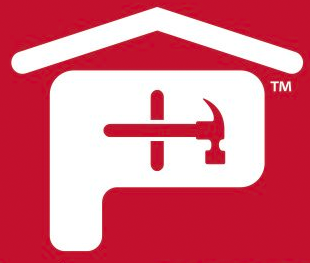There are areas of North America where storms containing high winds are prevalent and other areas where storms containing high speed winds or sustained high winds only occur once in a while. It only takes one instance however, with the right kind of conditions, for winds to wreak havoc on commercial low sloped roofs.
In the case of commercial low slope roofs the question is often whether wind damage could have been avoided, or if the extent of damage may have been reduced. For low slope roofs on commercial buildings the results of a storm has as much to do with the components specified and quality of the installation as it does with the severity of the storm itself.
Commercial Low Slope Roofs Don’t “Blow Off”
Even though it’s a common expression, it’s usually not technically correct to say a roof has “blown off.” Most actually perform as they are designed, but are actually not designed to withstand prolonged winds of hurricane or tornado intensity. Sometimes roofing systems can be damaged even by moderate winds of 50 to 75 miles per hour
Most manufacturers’ warranties on complete roof systems (BUR, EDPM, TPO) don’t cover winds in excess over 54 miles per hour. Even if the roof happens to be designed for heavy winds, the roof warranty will probably contain language to not cover “acts of God”. However, wind related storm losses should be covered by the insurance provider.
Rating Misconception
Roof system designers frequently reference the FM I-90 rating as part of their specifications. I-90 used to be the highest wind uplift design criteria at Factory Mutual, the insurance company that tests building components for its insured customers. It’s actually adequate and an accepted design standard for many parts of North America, but I-90 doesn’t have anything to do with wind speed. The “90” refers to pounds of uplift or negative pressure. So when a roof system or system components have an 1-90 rating, it means it can handle 90 pounds of negative or uplift pressure.
Commercial roofs typically fail from negative pressure around the perimeter. In other words, negative pressure forms as the wind meets a building. Instead of a colliding with the building, the wind acts as it does when it meets an airplane wing, creating lift as it rolls over the parapet wall or meets the roof edge. So behind the parapet or at the roof edge, the negative pressure pulls on the roof membrane and the roof flashing.
Minimizing Damage
For this very reason, it’s important that the roof installation has followed specified guidelines and the work has been thorough and complete. As wind is creating lift on edge components, any shortcuts in installation such as sub par fastening or not bringing insulation adhesive completely to the edge, will be quickly and destructively revealed. One of the best ways to minimize wind damage in low slope roofs is to give careful attention to the specified system details for the edges and then to complete every detail in the installation.
The other important practice which may help minimize risk and damage to low slope roofs from high winds is to constantly inspect the condition of the roof. If you are in an area where multiple storms have occurred or might occur, this is even more critical. Even if a roof has weathered one storm, it may now be weak and in need of maintenance repairs to prevent it from completely giving way in a subsequent storm. Refastening and securing the edges may save on more extensive and costly repairs later.



 Gear!
Gear! PRO LOGIN
PRO LOGIN